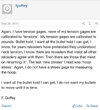Interference Fit
In the interference fit, mating parts in sub-assembly or main assembly are joined tightly together and no relative motion is possible. The minimum permitted diameter of the shaft is larger than the maximum allowable diameter of the hole. In this case, the shaft and the hole member in any sub-assembly or main assembly are to be attached permanently and used as a solid component but according to the application of this combination, this type of fit can be varied. Interference fit is used for permanent or semi-permanent assembly of parts, which require rigidity and alignment and no relative motion, such as dowel pins and bearings in casting. The difference between the size of the shaft and the size of the hole in any sub-assembly or main assembly is called interference or negative clearance or negative allowance. Interference fit has limits of size so prescribed that interference always results when mating parts are assembled. Transition fits are of two kinds namely driving or press-fit and shrink or force fit. To assemble, parts are usually pressed together using an arbor press
The interference fit can be sub-classified as follows :
Shrink Fit or Heavy Force Fit
It refers to the maximum negative allowance. In the assembly of the hole and the shaft, the hole is expanded by heating and then rapidly cooled in its position. It is used in the fitting of rims etc.
Medium Force Fit
These fits have medium negative allowance. Considerable pressure is required to assemble the hole and the shaft. It is used in car wheels, armature of dynamos, etc.
Tight Fit or Press Fit
One part can be assembled into the other with a hand hammer or by light pressure. A slight negative allowance exists between two mating parts (more than wringing fit). It gives a semi-permanent fit and is used on a keyed pulley and shaft, rocker arm, etc.



